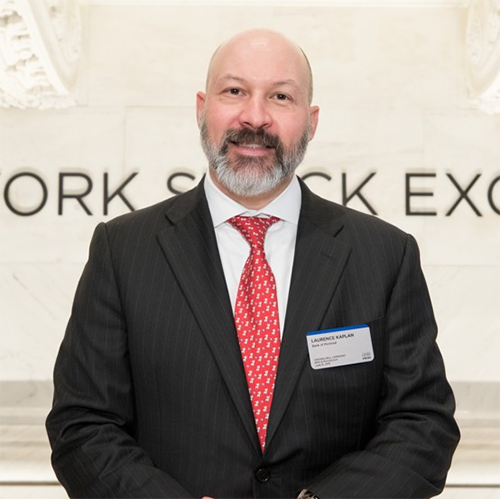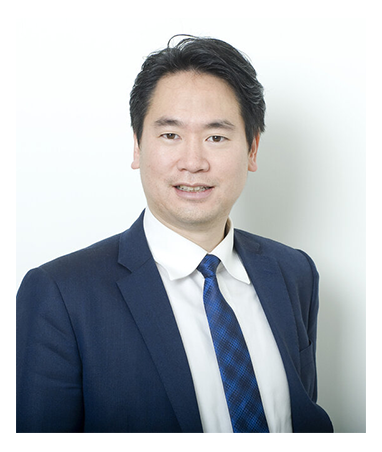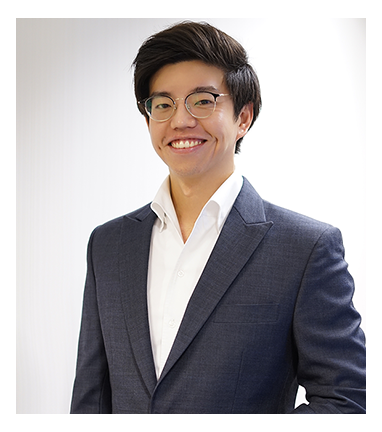The Canadian bank is expanding its footprint in the US market; new benchmarks offering rotating exposures and sustainability opportunities launched; Swiss firm automates price contribution workflows; and more.
BMO has launched MAX, a new leverage and inverse exchange traded notes (ETNs) range targeted at sophisticated investors seeking tactical leveraged exposure to stocks in specific market sectors. MAX is the leveraged and inverse leveraged ETN brand of BMO which falls under the responsibility of Laurence Kaplan (pictured), managing director, BMO Capital Markets.
The first two MAX ETNs - the MAX Airlines 3x Leveraged ETNs and MAX Airlines -3x Inverse Leveraged ETNs which are available on NYSE Arca - are linked to the performance of the Prime Airlines Index.
The Prime Airlines index which has been developed by financial research publisher Prime Indexes, tracks the performance of US-listed companies that are engaged in the broader airlines industry ecosystem. Each index constituent must be classified as an airline, as aircraft parts and manufacturing company, or an air freight and logistics company, as determined by Prime Indexes, based on the index constituent issuer’s regulatory filings, industry classification, and other related material.
The Canadian bank has also listed two new MAX ETNs linked to the performance of the Prime Auto Industry Index - the MAX Auto Industry 3x Leveraged ETNs and MAX Auto Industry -3x Inverse Leveraged ETNs which are available for trading on NYSE Arca.
The Prime Auto Industry index tracks the performance of US-listed companies that are engaged in the broader auto industry ecosystem. Each index constituent must be classified as an automobile manufacturer, an automotive parts and retail company, a new car dealer, or a used car dealer, based on the Index constituent issuer’s regulatory filings, industry classification, and other related material.
MSCI deploys real time macro data in new ‘allocator’ play
Alternative data specialist QuantCube Technology has partnered with MSCI to integrate its real time macro-economic data into the new MSCI Economic Regime Allocator Index.
The new series include US and world versions as well as optimised risk control options of five and 10% aimed at structured products.
The MSCI Economic Regime Allocator Index allocates assets into different exposures based on a pre-determined set of rules. The index works on the premise that financial markets generally go through different cycles or phases, and during these cycles, different types of assets or stocks tend to perform differently.
To match this behaviour, the index allocates assets to different market subsets based on the current economic regime. As the economy moves from one regime to another the assets in the index are rotated and reallocated with the aim of maximising investment performance.
The definition of the four different economic regimes – stagflation, heating up, slow growth and goldilocks – are based on the rate of change of GDP and CPI indicators and whether these are rising or falling.
Based on historical market data from MSCI and QuantCube, recorded over a 10-year period from October 2012 to February 2023, the new index demonstrated annualised returns of 11.04% versus a benchmark return rate of 5.83%.
The benchmark was based on allocating 60% of assets to the MSCI World index and 40% to USA treasuries. Additionally, looking at the most recent 1-year performance of the new index, it showed annualized returns of +0.8% versus a negative return of -8.59% for the benchmark.
‘Though future returns can never be guaranteed, the simulations we’ve conducted with MSCI to demonstrate the projected annualized returns versus the benchmark shows the value to be gained by allocating assets based on the economic regime,’ said Thanh-Long Huynh (above-right), CEO and co- founder, QuantCube Technology.
Swiss boutique adopts zero touch solution
MDX Technology (MDXT), a low-code connectivity and workflow solutions provider for financial institutions, has onboarded CAT Financial Products (CATFP) which will use the MDXT platform to automate multi-vendor pricing contributions workflows to Bloomberg, Refinitiv and Telekurs.
CAT Financial Products has been offering its services to professional asset managers, banks and institutional investors since 2012. The company received its securities firm license from FINMA in March 2023 and has been expanding its product, trading and service capabilities since then including the adoption of a multi-asset post-trade processing solution offered by global fintech Broadridge Financial Solutions to increase its front to back-office processing efficiency.
‘As a new participant to the market we required a solution that is quick to deploy, high-performing and cost-effective,’ said Irmo Manie (above-right), CTO at CAT Financial Products.
‘We now have a consolidated platform which needs minimal input from us and we can focus our team on more value-add activities.’
Nomura expands derivative index series, adds double inverse on gov bonds
Nomura Asset Management (NAM), the core company within the Investment Management Division of Nomura Group, has listed a new ETF designed to track the performance of the JPX JGB Futures Double Inverse Index on the Tokyo Stock Exchange (TSE).
The JPX JGB Futures Double Inverse Index is part of the JPX JGB Futures Series which consist of four indexes including the JPX JGB Futures Index, JPX JGB Futures Inverse Index, JPX JGB Futures Leveraged Index and JPX JGB Futures Double Inverse Index.
The underlying of Japanese Government Bond (JGB) Futures are standardised bonds which are set with a coupon rate and a maturity by an exchange for the standardisation - for the final settlement of JGB Futures, one of the deliverable grades will be delivered because standardised bonds are unreal bonds.
The JPX JGB Futures Double Inverse Index is calculated by applying -2.0 multiplying factor to the daily rate of return of the JGB Futures which are listed on markets operated by Osaka Exchange.
The ETF is the first bond-inverse ETF in Japan and aims to meet the growing demand for hedging against the risk of rising yen interest rates. The new listing brings ETFs in Nomura’s NEXT FUNDS range to a total of 68 tracker funds.
Huatai's Hong Kong DWs get noticed
Huatai International has listed 21 derivative warrants covering 11 underliers (DWs) in Hong Kong SAR since entering the listed structured product market on 6 June.
The products posted 13.45 million outstanding shares – 80% of them came from a call DW linked to Tencent shares with a strike level of 375, accounting for 14.9% of the total shares of the product as of today (12 July).
“We have seen varying degrees of trading activity and as expected, it takes time to gain a foothold in this competitive market. Pleasingly, we are starting to get noticed by investors and have been selling small amounts of products…,” Paddy Cao (above right), head of warrants at Huatai International told SRP. “Nonetheless, our main focus has been increasing our product offerings.”
According to Cao, Huatai's systems have been “providing high levels of liquidity with tight spreads” for the DWs, which means that no investor has needed to ask for a single quote request. The Chinese securities house has plans to incorporate a range of callable bull/bear contracts (CBBCs) to its offering later this year.
HSI rolls out China Central SOEs ESG leaders underlier
Hang Seng Indexes (HSI) has launched the Hang Seng SCHK China Central SOEs ESG Leaders Index, the latest addition to HSI ESG index suites targeted at investors interested in sustainable investing.
The Hang Seng SCHK China Central SOEs ESG Leaders Index is a best-in-class ESG index that reflects the performance of top 40 ESG leaders listed in Hong Kong with central SOE as the largest shareholder that are eligible for Southbound Trading under the Stock Connect schemes. Securities with the lowest ESG Risk Ratings within each Hang Seng Industry Classification System (HSICS) Industry will be selected.
The launch of the Hang Seng SCHK China Central SOEs ESG Leaders Index will help investors to integrate ESG elements into central SOEs portfolios, enabling them to capitalise on opportunities in China’s transition to a sustainable economy in which central SOEs will play an imperative role, stated the index provider.
The new index will bring to 21the number of HSIL’s ESG-themed indexes including ESG integration, decarbonisation-focused, best-in-class, as well as green economy thematic. The Hang Seng SCHK China Central SOEs ESG Leaders Index is calculated and disseminated in real-time at two second intervals.



